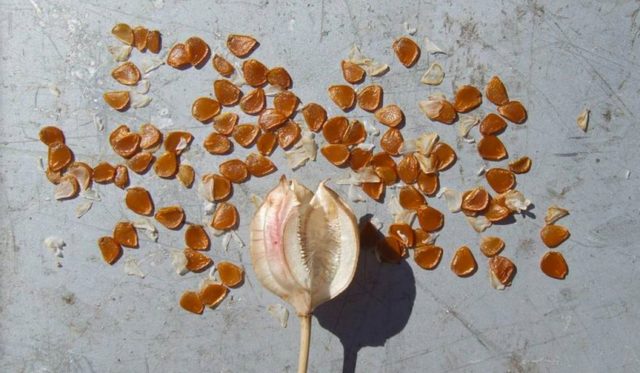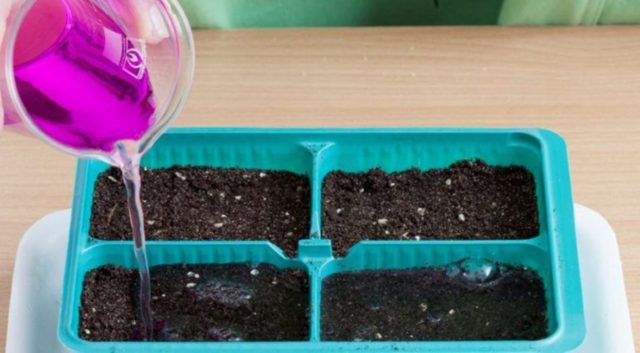Content
Tulips are bright and multifaceted symbols of spring. Summer residents and gardeners love to experiment with these flowers. Growing tulips from seeds at home, at first glance, is incredible, but you just have to try, and the young sprouts will conquer any doubts.

Tulips are rarely grown from seeds, but this method is also practiced
Is it possible to grow tulips from seeds?
Today these flowers are associated with Holland, but many centuries ago they were first grown in Asia. The name itself comes from the ancient Persian word, which translates as “turban”. Tulips were especially highly prized in the Ottoman Empire.
In the 16th century, flowers came to Europe. Since then, the world has been gripped by a real tulip fever. Breeders are constantly creating new hybrid varieties, surprising with the shape of the petals and colors.
The common planting material for everyone is bulbs. The seed method of propagation is questionable. It is quite possible to get beautifully flowering tulips from seeds. The only “but” is that the growing process will be long (5-10 seasons).But this will not stop passionate flower growers. Seeing how a precious bulb is formed from a small seed is a real miracle. You can also try your hand at selection and get original varieties of tulips.

Growing tulips from seeds is a very long process.
When to plant tulips with seeds
It is best to carry out the procedure in the fall (September-October). But if the tulip seeds (pictured below) were collected in the spring, the timing is slightly shifted, and planting can begin in the last days of October or the first half of November. In the first spring, a thin sprout will appear with only one leaf. In the second year, this leaf will become even larger, and the bulb bud will be almost completely formed.

It is better to collect tulip seeds in early autumn
How to grow tulip seeds at home
Some gardeners plant seeds directly into the ground. If in winter the air temperature is below - 5 °C, the plantings require additional shelter in the form of dense film or branches.
Many people prefer to grow tulips from seeds at home. This allows you to get stronger and more viable plants in the future. For this, greenhouses are used, and cultivation is also carried out indoors (in pots or containers).
Seed collection and soil preparation
The tulip should completely bloom. Then the stem is tied so that the arrow is in a strictly vertical position. Mature bolls begin to crack. This is the first signal that you can start collecting them.Ripe seeds usually darken and take on a red-orange hue. The box is carefully separated from the base with sharp scissors and transferred to a dry, dark room. It must dry completely.

Tulip seeds are collected when the capsule cracks
When the planting material is ready, you need to take care of the soil. Often they use ready-made soil, which is sold in any gardening store. You can prepare the soil mixture yourself by combining peat with organic matter and coarse sand. The substrate must be nutritious, loose, and well permeable to moisture and oxygen.
Landing rules
It is not difficult to obtain tulip seedlings from seeds.
The whole process includes several stages:
- Prepare containers (oblong boxes or pots) in advance and make small holes in the bottom.
- Drainage is placed at the bottom, and the prepared soil mixture is poured on top. It is leveled and depressions of about 3 cm are made. After this, the seeds are densely sown (each grain in its own cell) and sprinkled with sand.
- For the first month, the container is covered with regular cling film with holes for ventilation. The room temperature is maintained at least + 15 °C. As soon as the first sprouts hatch, the containers are transferred to a warm room with a comfortable room temperature. It is not recommended to place tulips near heating appliances and radiators. This will quickly evaporate the life-giving moisture.
Watering and fertilizing
Tulips do not like drought. Plantings must be regularly moistened using drip irrigation. This can be conveniently done at home using a small watering can, a small spray bottle or an ordinary syringe. This procedure is done approximately once every 6-7 days. It is best to use warm, settled water.

Seeds will die in waterlogged soil.
Organic and mineral fertilizers can be used as fertilizers. Humus or compost, chicken manure in granules that have been sterilized, wood ash, as well as complex mineral preparations are suitable for these purposes. It is very important for tulips to receive the necessary macro- and microelements (copper, magnesium, potassium, phosphorus, nitrogen, boron, molybdenum, iron, zinc, magnesium).
Preparing for planting in open ground
In the 3rd year, active vegetative division begins, and small baby onions appear. At the beginning of August they are divided and transferred to open ground. Holes are made in a pre-prepared area (each depth is from 10 to 12 cm). For small bulbs, maintain a distance of about 9 cm between the holes.
Clean river sand is poured into the depressions and watered with salt (1 glass per 10 liters). Before planting, it is useful to keep the bulbs in a weak solution of potassium permanganate for disinfection. In regions with cold winters, the bulbs will need to be additionally insulated with a layer of humus about 5-6 cm thick. If baby bulbs are planted in the spring, they will not bloom, but by autumn they will have time to strengthen and grow well.
Next, the plants are provided with the usual care: regularly watered, fertilized, carefully loosened the soil and periodically inspected for diseases and pests.
How to store tulip seeds in winter
Breathable paper bags that can be folded into plastic containers are best suited for this.For tulip seeds, provide the same conditions as for any other flowers: in a cool, dark room with a normal level of humidity. If there is dampness, mold will form on the seeds. Foil cannot be used as packaging, as this will cause the seeds to lose their viability.
The bulbs are stored in cardboard containers at room temperature, out of direct sunlight. For planting material that should remain in storage until spring, the optimal temperature is + 15 °C.
Useful tips
Growing tulips from seeds is a rather complicated process. Not every gardener decides to do this. Those who have practiced this method of cultivation know many secrets of growing tulips from seeds.

Proper care will allow you to get strong shoots
A few recommendations:
- Correct temperature conditions and regular watering will allow you to get healthy and strong shoots.
- Do not plant tulip bulbs near potatoes or cabbage.
- Bulbs affected by disease or pests must be dug up and burned in a timely manner.
- It is permissible to plant tulips before the coldest weather, but in the spring they will bloom much later than expected.
- Young plants need to be protected from sunlight. If this is not done, the green mass will grow to the detriment of the formation of buds.
- Every year it is recommended to plant tulips in a new place. This will protect them from diseases.
- After flowering, the bulbs must be dug up and carefully sorted. All questionable specimens are immediately disposed of.
- At home, you can regulate the flowering of tulips. To admire beautiful flowers in winter, you need to water and feed them twice a week. After budding, the pots are moved as far as possible from the radiators.
- Tulips can also be grown in hydrogel or water.
Conclusion
Growing tulips from seeds at home is the choice of the most patient gardeners. This method allows you to develop new varieties, regulate the size of the flower and its color. Complex care is not required, but incredibly beautiful tulips, grown with your own hands from a small grain, will reward your patience and work and will become indicators of skill.








